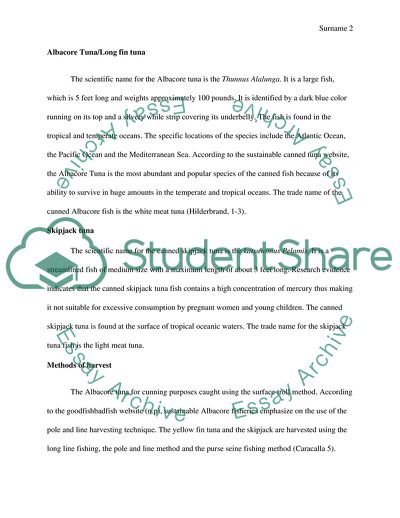Cite this document
(Sustainability of the Canned Tuna Harvest Coursework Example | Topics and Well Written Essays - 1500 words, n.d.)
Sustainability of the Canned Tuna Harvest Coursework Example | Topics and Well Written Essays - 1500 words. https://studentshare.org/environmental-studies/1818574-canned-tuna
Sustainability of the Canned Tuna Harvest Coursework Example | Topics and Well Written Essays - 1500 words. https://studentshare.org/environmental-studies/1818574-canned-tuna
(Sustainability of the Canned Tuna Harvest Coursework Example | Topics and Well Written Essays - 1500 Words)
Sustainability of the Canned Tuna Harvest Coursework Example | Topics and Well Written Essays - 1500 Words. https://studentshare.org/environmental-studies/1818574-canned-tuna.
Sustainability of the Canned Tuna Harvest Coursework Example | Topics and Well Written Essays - 1500 Words. https://studentshare.org/environmental-studies/1818574-canned-tuna.
“Sustainability of the Canned Tuna Harvest Coursework Example | Topics and Well Written Essays - 1500 Words”. https://studentshare.org/environmental-studies/1818574-canned-tuna.


